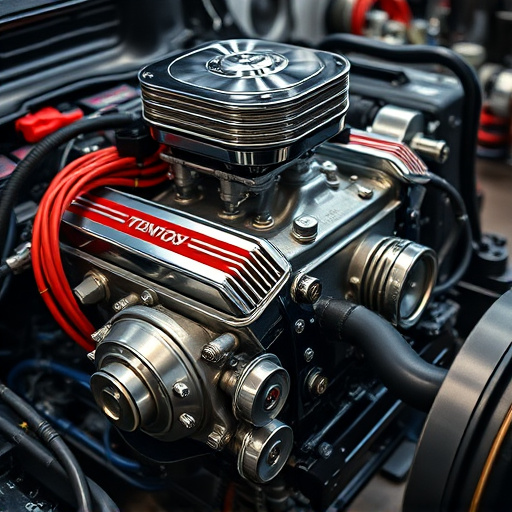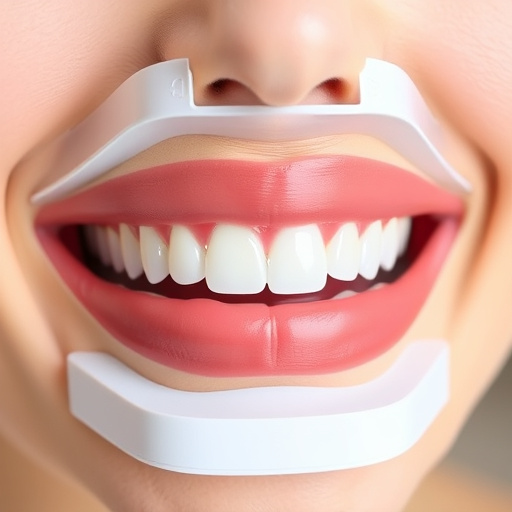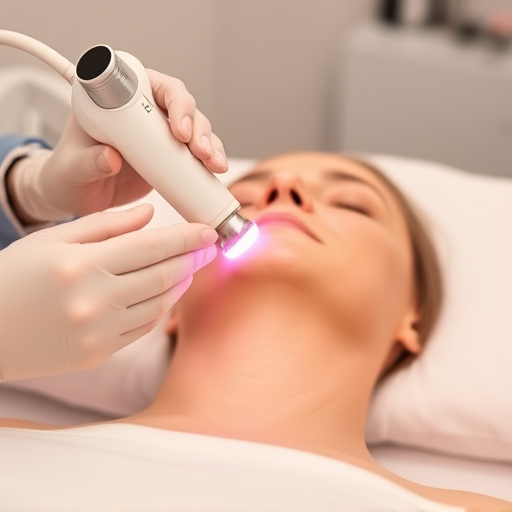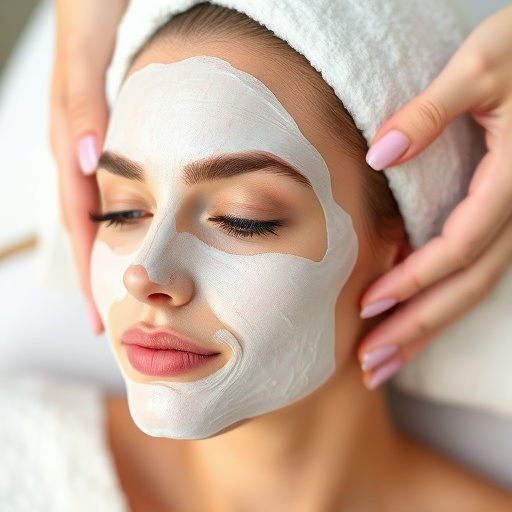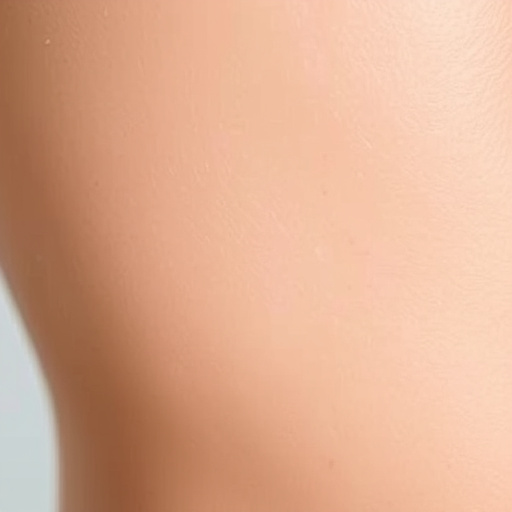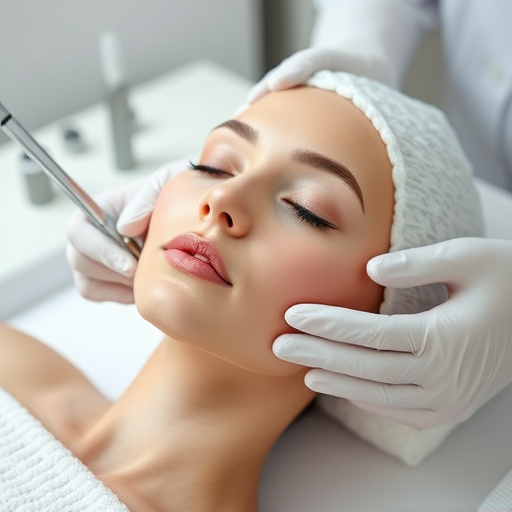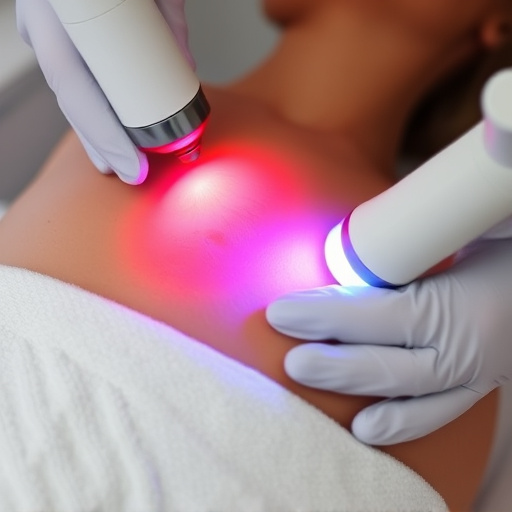This text explores various methods for achieving smooth skin, focusing on chin hair removal. It highlights modern treatments like laser hair removal, intense pulsed light (IPL), and chemical peels as effective solutions, especially for those with Polycystic Ovarian Syndrome (PCOS). These techniques offer long-lasting results, addressing both cosmetic and psychological aspects of excessive facial hair associated with PCOS.
Many women with polycystic ovary syndrome (PCOS) experience excessive facial hair growth, particularly on the chin. Understanding this specific aspect of PCOS is crucial for effective management. This article delves into the topic of chin hair removal, exploring various methods and modern treatments available today. From traditional approaches to cutting-edge solutions, we provide insights into what works best, helping you navigate the options and achieve smoother skin.
- Understanding Chin Hair Growth in PCOS
- Effective Methods for Chin Hair Removal
- Modern Treatments and Their Success Rates
Understanding Chin Hair Growth in PCOS

Pajn Bedureself Structure, Restat Source, *
Effective Methods for Chin Hair Removal
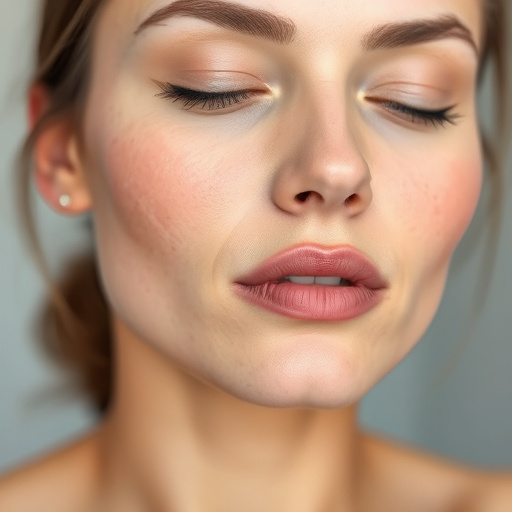
When it comes to effective chin hair removal for those dealing with Polycystic Ovarian Syndrome (PCOS), several methods have emerged as popular choices. One highly sought-after option is laser hair removal, which targets the hair follicles and inhibits future hair growth. This non-invasive procedure offers long-lasting results, making it a preferred method for many.
Another effective approach is focusing on skin rejuvenation and brightening techniques. Certain treatments, such as chemical peels and microdermabrasion, can help exfoliate the skin, reduce hair visibility, and even out skin tone. While these methods may require more frequent sessions, they contribute to smoother, softer skin and further enhance the overall appearance, addressing both the chin hair and skin’s overall health.
Modern Treatments and Their Success Rates

Modern treatments for chin hair removal have significantly advanced in recent years, offering a range of effective options for individuals managing Polycystic Ovary Syndrome (PCOS). One popular and relatively non-invasive method is laser hair removal, which targets the follicle to reduce hair growth. Studies show success rates of up to 90% over multiple sessions, making it a preferred choice for many. This procedure is often performed in medical spas by licensed professionals who can tailor the treatment to individual needs.
Other effective solutions include intense pulsed light (IPL) therapy and chemical peels. IPL treatments work by disrupting the growth cycle of hair follicles, leading to reduced hair visibility. While less aggressive than laser removal, it may require more frequent sessions for optimal results. Chemical peels, on the other hand, use a combination of chemicals to exfoliate the skin and inhibit hair growth, with success rates varying based on the severity of the condition. Many people find these modern treatments offer lasting solutions for chin hair removal, addressing both the cosmetic concerns and the potential psychological impact of excessive facial hair associated with PCOS.
When it comes to managing chin hair growth associated with Polycystic Ovary Syndrome (PCOS), understanding effective methods is key. This article has explored the connection between PCOS and facial hair, highlighting the importance of tailored solutions. From traditional waxings and laser treatments to modern innovations like ipl (Intense Pulsed Light) therapy, various options offer promising success rates. By choosing the best chin hair removal method for your needs, you can take control of your appearance and overall well-being. Remember, consistent care and professional guidance are essential steps towards achieving smoother, confidence-boosting results.
